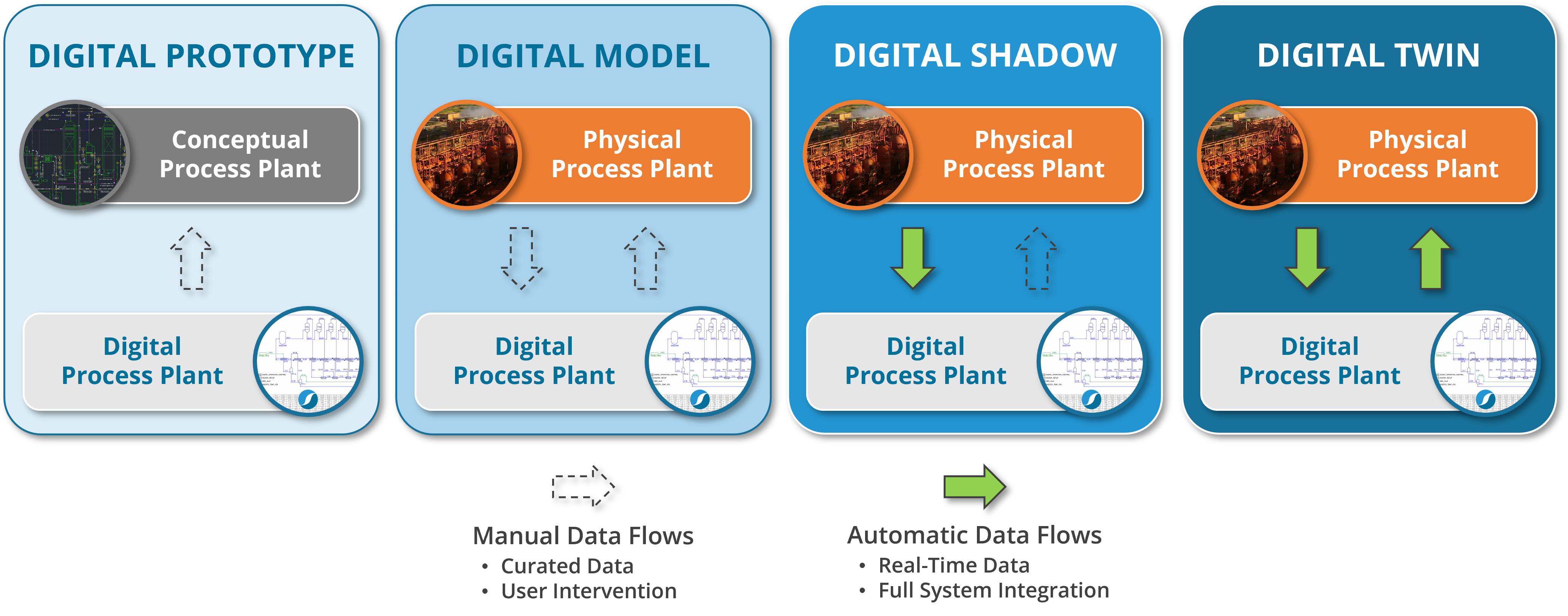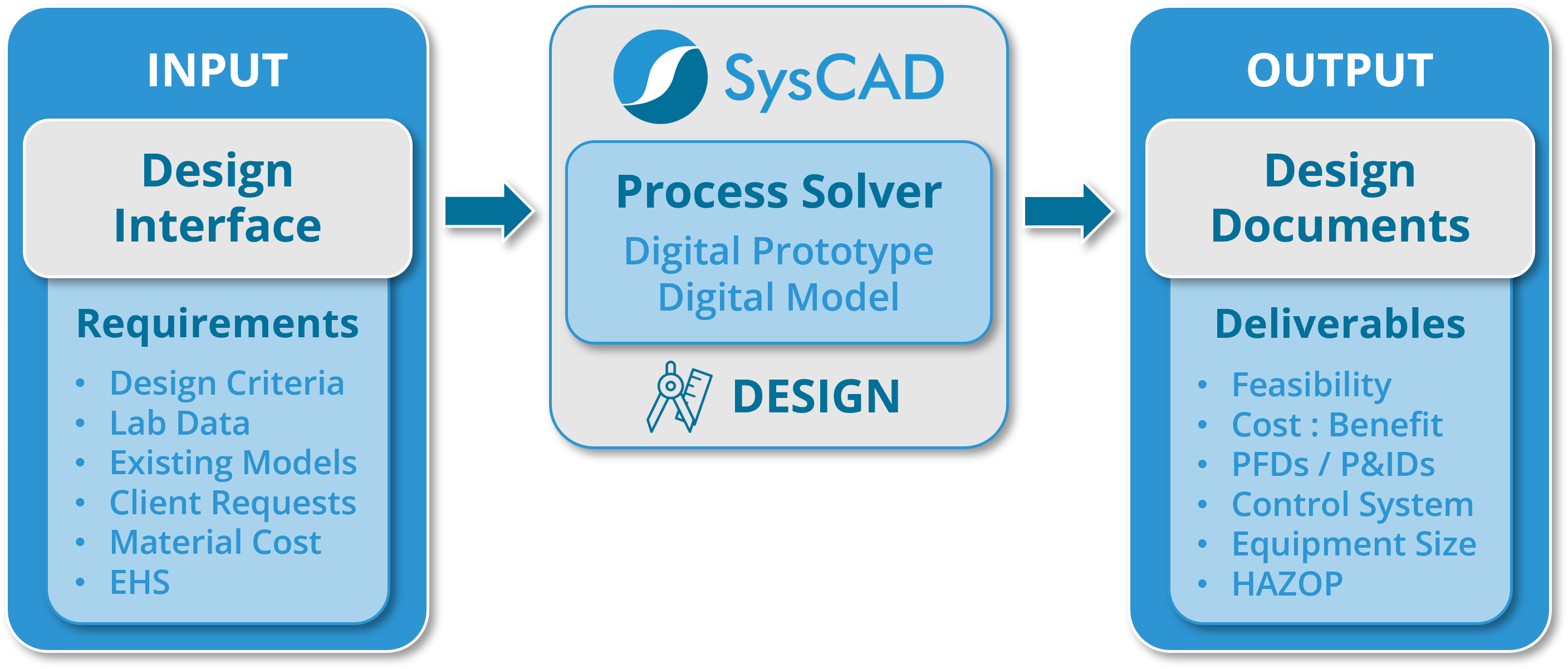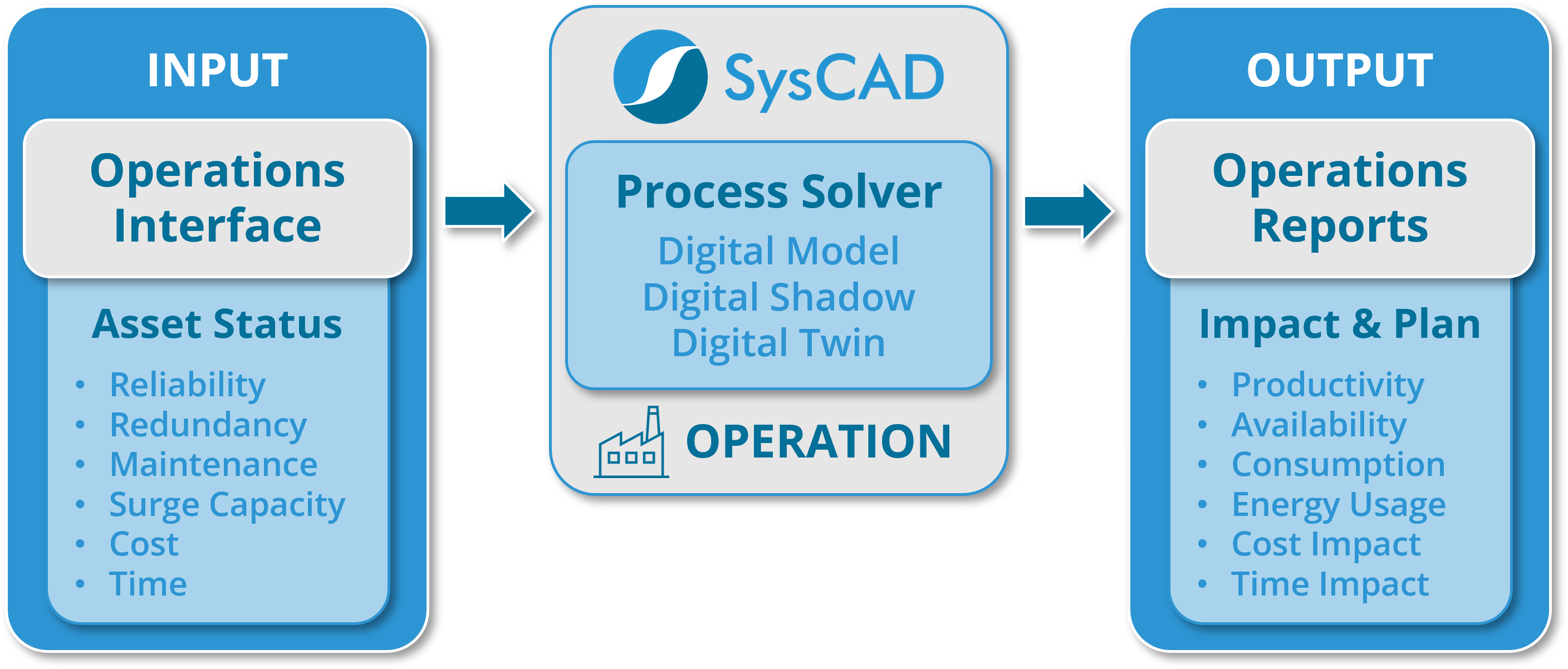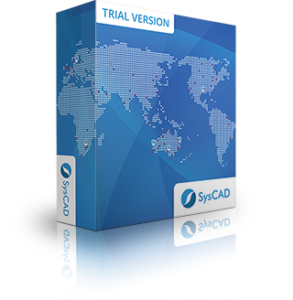Why Process Simulation?
Metallurgical and chemical plants are complicated, consisting of interconnected areas with equipment of varying availability and reliability. Due to their complex nature, maximising asset utilisation and planning efficient production is inherently challenging.
Process simulation within a robust solver allows for capturing and balancing the interaction of process units and analysing their effect on plant productivity and consumption. In dynamic models, where time and capacity are also considered, the behaviour of feed variability, surge volumes, unit availability and control schemes may also be studied. These tools are invaluable in optimising a plant’s operational strategy.
 The applications of a process model change throughout the lifecycle of plant development from design to operation, and focus often shifts from steady-state to dynamic modelling as different use cases mature. Another key transformation is from Digital Prototype through to Digital Twin.
The applications of a process model change throughout the lifecycle of plant development from design to operation, and focus often shifts from steady-state to dynamic modelling as different use cases mature. Another key transformation is from Digital Prototype through to Digital Twin.
Understanding Digital Twins
Here we focus on Process Digital Twins which are distinctly different from 3D Asset Digital Twins. The IEEE paper “Digital Twin Enabling Technologies, Challenges and Open Research”[1] distinguishes between Digital Model, Digital Shadow and Digital Twin by the different manual or automated flows of data between the physical process plant and its digital counterpart. We have added Digital Prototype to the list to account for simulation in process design without the physical plant.

A Digital Prototype is a simulation of a process which does not physically exist. These are built by process design teams to represent an envisaged greenfield process plant or proposed brownfield expansion. Digital Prototypes are typically developed based on engineering knowledge, laboratory tests and similar existing processes and are manipulated to determine the optimal process design.
A Digital Model is a simulation of suitable fidelity for the use case to represent the physical equipment and control philosophy as built. Digital Models are used to support operations by solving scenarios using manually curated or hypothetical input data. Model results are analysed and used to make manual adjustments to improve the process and optimise plant performance.
A Digital Shadow is realised when the simulation is instead fed with automated as-measured data via integration with plant systems and databases. Digital Shadows are used to track and validate plant performance. As with Digital Models, the output data is used to inform manual adjustments to the physical plant, including changes to control schemes and maintenance schedules.
A true Digital Twin is defined as using the process model with an automated set of input data and where output data is automatically analysed and returned to plant control and management systems. These have the potential to make real-time decisions without user intervention. Process Digital Twins are typically, but not exclusively, dynamic models with full plant system integration.
Today, we see many users who have applied Digital Prototypes in design studies and achieved Digital Model implementations for operational support. We also see some operators who have achieved limited or area-specific Digital Shadow applications. However, by the definition above, very few have achieved a true Process Digital Twin.
Digital Prototyping for Process Design
The use of simulation platforms such as SysCAD for process design is well established in industry. Consultants and owner-operators use Digital Prototypes to validate mass and energy balances for feasibility studies and detailed design of proposed plant expansions and major process changes. Often, an existing validated Digital Model is used as the basis for a Digital Prototype. Minor process or control scheme changes may be investigated directly within the Digital Model environment.
Communication across teams and with EPCs is typically through model results in the form of PFDs and P&IDs. After commissioning, process validation will involve comparison to the Digital Prototype, which then becomes the basis for a tuned Process Model for use in operations.
 Digital Simulation for Operational Support
Digital Simulation for Operational Support
A well-maintained SysCAD Digital Model provides the foundation for a Digital Shadow or Digital Twin for operations teams to monitor and improve plant performance. After development and validation of the initial Digital Model, the pathway to a Digital Shadow and Twin begins with the integration of operator control and response philosophies into the model. These include internal and external factors, such as production targets, maintenance and shipping schedules, equipment failure and repair events, cost and market impact models, and varying feed quality and product specifications.
SysCAD’s Open Architecture Environment delivers significant opportunities which may be leveraged by operations teams running process simulations on a local solver or hosted environment. Digital systems integrators play a key role in developing and deploying bespoke solutions using SysCAD integration interfaces (APIs).
 Applications and Benefits
Applications and Benefits
While SysCAD continues to advance towards cloud-based hosted solver solutions and improved API access for next-generation integrated Digital Shadow and Twin solutions, current investment in Digital Prototypes and Models already provides various benefits in both design and operation.
Design:
- Feasibility and tabletop studies to identify design limitations before investment
- Mass and energy balances for concept validation, value proposition and cost-benefit analysis
- Identification of priority requirements for effective test work and pilot plant studies
- Development of design documents for internal communication and handover to EPCs
- Equipment sizing and futureproofing
- Control system design and validation
- Health, safety and environmental impact and HAZOP studies
- Commissioning nameplate capacity validation
Operation:
- Isolate and minimise plant bottlenecks and unexpected dynamic interactions
- Early identification of potential process issues and root cause analysis
- Control strategy optimisation and operator training
- Management of significant disturbances, such as planned and unplanned shutdowns
- Reporting of equipment utilisation, availability and reliability
- Raw material and utilities consumption, management of emissions and waste
- Support achievement of ESG goals and adherence to regulatory requirements
- Forecasting, production planning and maintenance scheduling
- Metallurgical accounting, inventory tracking, surge and availability studies
- “What If?” scenarios for plant optimisation and future expansion planning
The Value of a Model
The actual practice of building a model requires cross-disciplined engineering teams to quantify previously held assumptions, thereby obtaining a deeper understanding of all facets of the plant and process. This enhanced knowledge is captured in the model, becoming a valuable tool and repository of process information. The insights gained during model development can often lead to unexpected side projects for process optimisation or operational improvements with significant impacts on the bottom line.
Whether you are leveraging existing plant models or starting afresh, SysCAD provides the ideal simulation platform for the development of a robust and maintainable Digital Model, the foundation of a true Digital Twin.
References
- Fuller A, et al. (2020) “Digital Twin: Enabling Technologies, Challenges and Open Research” IEEE Access, vol. 8, pp. 108952-108971

